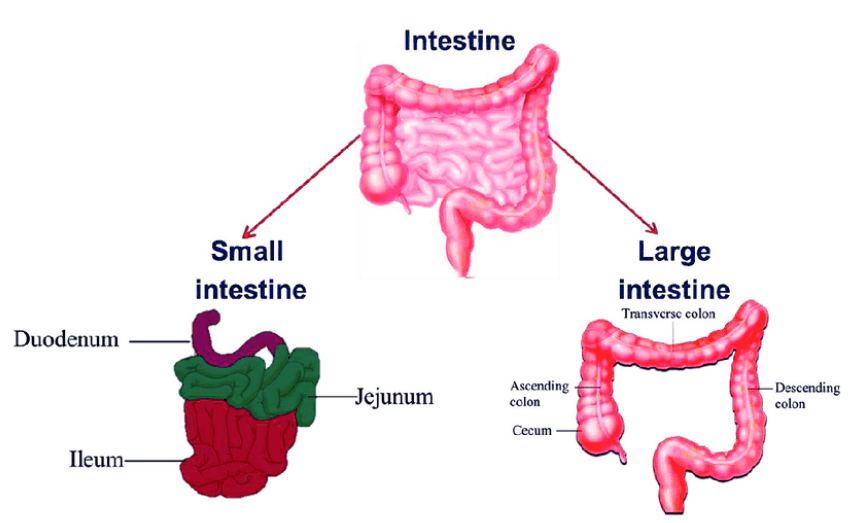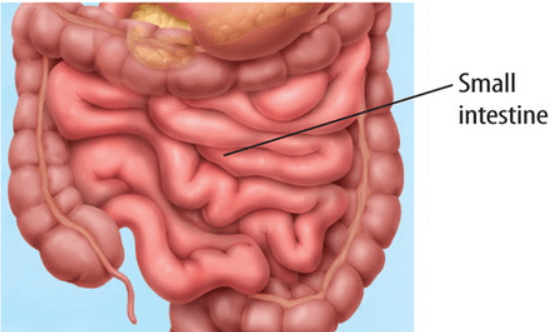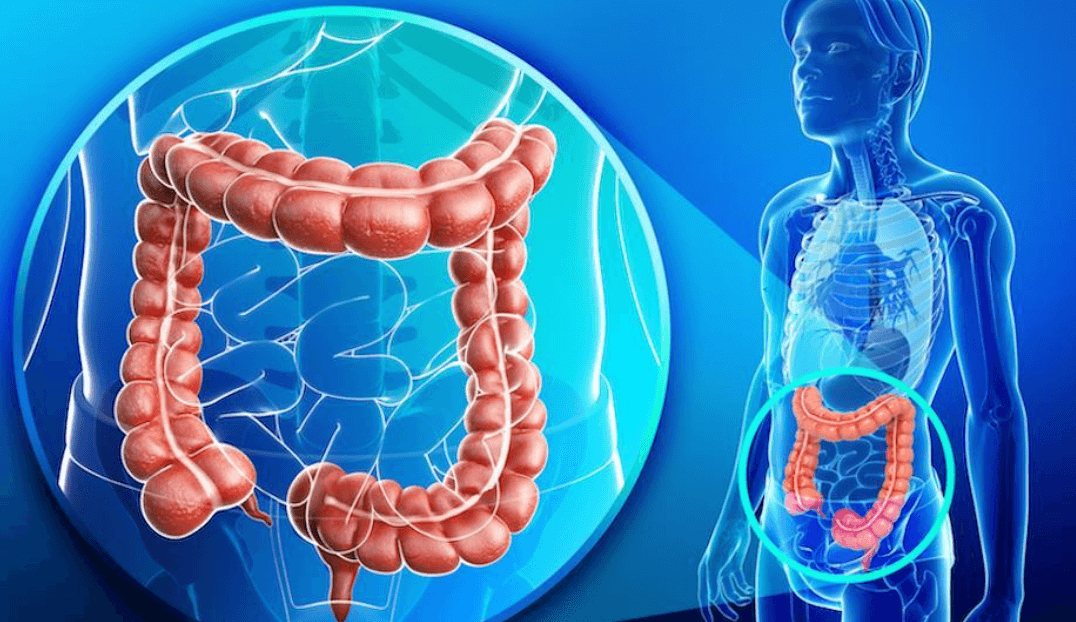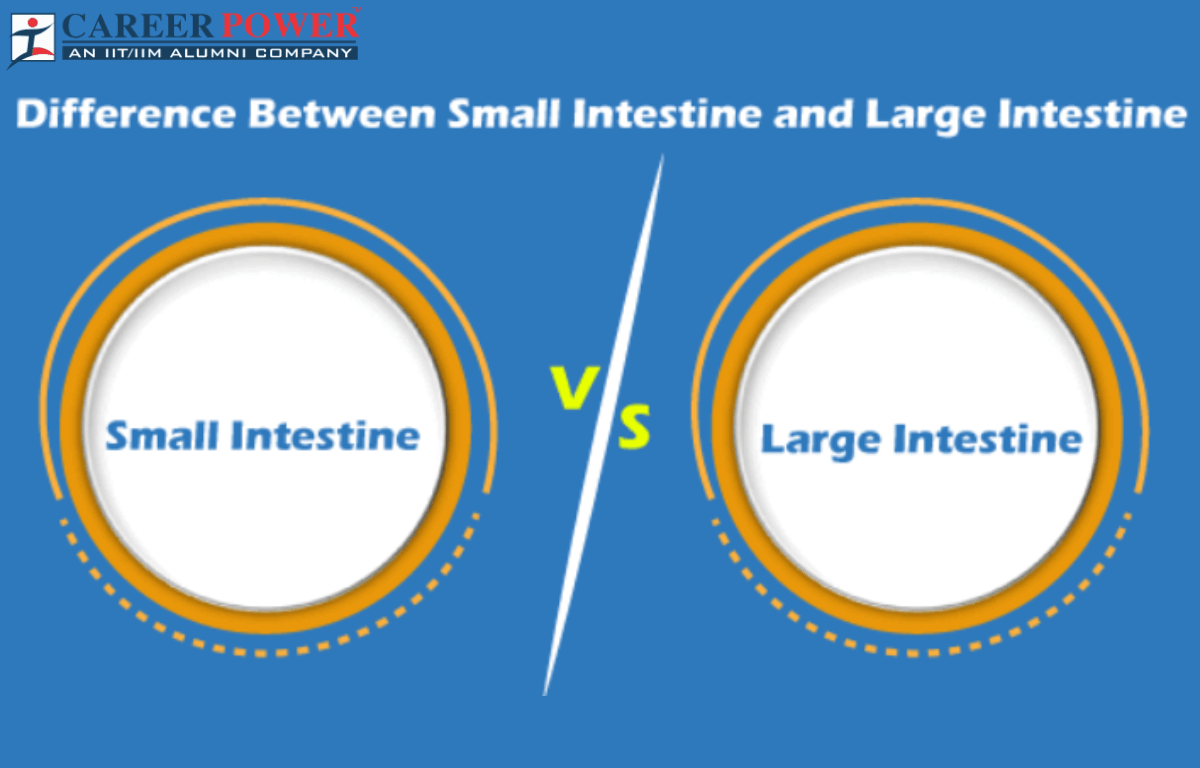As we all know the intestines are a visual part of the digestive system, consisting of the small intestine and the large intestine (colon). Small Intestine and Large Intestine plays crucial role in the absorption of nutrients from digested food and the elimination of waste products from the body. The digestive system is one of the most important topics of biology, which includes the small and large intestines.
What is Small Intestine and Large Intestine?
The small intestine and large intestine are the two main parts of the human digestive system. The small intestine and large intestine play crucial roles in the digestion and absorption of nutrients, as well as the elimination of waste from the body.

1. Small Intestine
- Location: The small intestine is a long, coiled tube located between the stomach and the large intestine.
- Function: Its primary function is to further digest and absorb nutrients from the food that has been partially digested in the stomach. It plays a crucial role in absorbing nutrients such as sugars, amino acids, and fatty acids into the bloodstream for the body to use.
- Structure: The small intestine has three sections; the duodenum, jejunum, and ileum. These sections are responsible for different aspects of digestion and nutrient absorption.

2. Large Intestine (Colon)
- Location: The large intestine is the last part of the digestive tract. and follows the intestine.
- Functions: Its primary function is to absorb water and electrolytes from the remaining undigested food, forming feces for elimination. It also houses a large population of beneficial gut bacteria that aid in fermentation and the production of certain vitamins, such as B vitamins and vitamin K.
- Structure: The large intestine consists of several parts, including the cecum, colon (which is further divided into the ascending, transverse, descending, and sigmoid colon), and the rectum, which ultimately leads to the anus for the elimination of waste.

Difference Between Small Intestine and Large Intestine
| Difference Between Small Intestine and Large Intestine | ||
| Characteristics | Small Intestine | Large Intestine |
| Location | Between the stomach and large intestine. | After the small intestine, before the rectum. |
| Length | Longer (about 20 feet or 6 meters). | Shorter (about 5 feet or 1.5 meters). |
| Diameter | Smaller in diameter. | Larger in diameter. |
| Structure | It is divided into three parts: duodenum, jejunum, and ileum. | Comprises the cecum, colon (ascending, transverse, descending, and sigmoid), and rectum. |
| Function | The primary site of nutrient absorption (nutrient digestion). | Absorbs water and electrolytes, forms and stores feces. |
| Microbial Population | Fewer resident bacteria and enzymes. | Contains a diverse population of gut bacteria. |
| Mobility | More frequent peristalsis, responsible for moving chyme forward. | Slower peristalsis, mainly for moving and compacting feces. |
| Absorption of Water and Electrolytes | Absorbs most water and nutrients from chyme. | Absorbs remaining water and electrolytes from chyme. |
| Fecal Formation | Chyme is liquid, and digestion is mostly complete. | Feces are formed, solidified, and shaped. |
| Absorption of Vitamins and Minerals | Absorbs vitamins (e.g., B and fat-soluble vitamins) and minerals (e.g., iron). | Minimal absorption of vitamins and minerals, mostly produced by gut bacteria. |
| Role in Digestion | Continues digestion of food. | No significant digestion. |
Functions of Small Intestine and Large Intestine
The small intestine and large intestine are essential parts of the digestive system, each with its own specific functions. The small intestine primarily focuses on digestion and nutrient absorption, while the large intestine is responsible for water absorption, the formation of feces, and the elimination of waste. Together, they ensure the efficient processing of food and the removal of waste products from the body.
Functions of Small Intestine
- Digestion: The small intestine plays a crucial role in the digestion of food. It receives partially digested food from the stomach and further breaks down carbohydrates, proteins, and fats using enzymes produced by the pancreas and its own mucosal cells.
- Absorption: Nutrient absorption primarily occurs in the small intestine. It has a large surface area due to the tiny finger-like projections called villi and microvilli, which facilitate the absorption of nutrients such as glucose, amino acids, and fatty acids into the bloodstream.
- Nutrient Transport: The absorbed nutrients are transported to various cells and tissues in the body through the bloodstream, providing energy and essential building blocks for bodily function.
Functions of Large Intestine (Colon)
- Absorption of water: The primary function of the large intestine is to absorb water from the remaining undigested food material, turning it from a liquid state into a more solid form (feces).
- Formation of Feces: As water is absorbed, the remaining material in the large intestine becomes concentrated and forms feces. The colon also contains beneficial bacteria that ferment some undigested carbohydrates, producing gases and certain vitamins.
- Storage and Elimination: The large intestine temporarily stores feces until they are ready for elimination from the body. This elimination process occurs through the rectum and anus in the form of bowel movements.



 50 Vegetables Name for Kids in English a...
50 Vegetables Name for Kids in English a...
 Food Chain: Definition, Types, Examples,...
Food Chain: Definition, Types, Examples,...
 Human Respiratory System: Definition, Di...
Human Respiratory System: Definition, Di...













